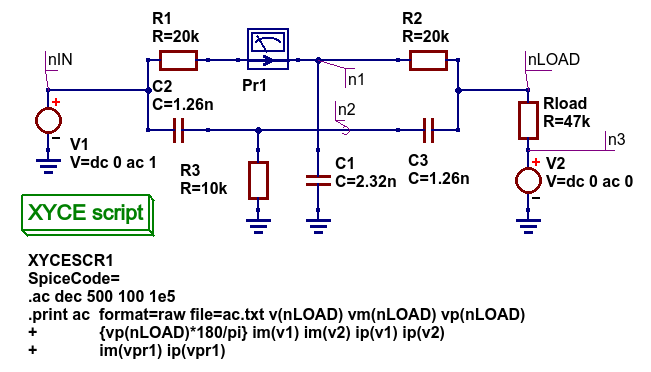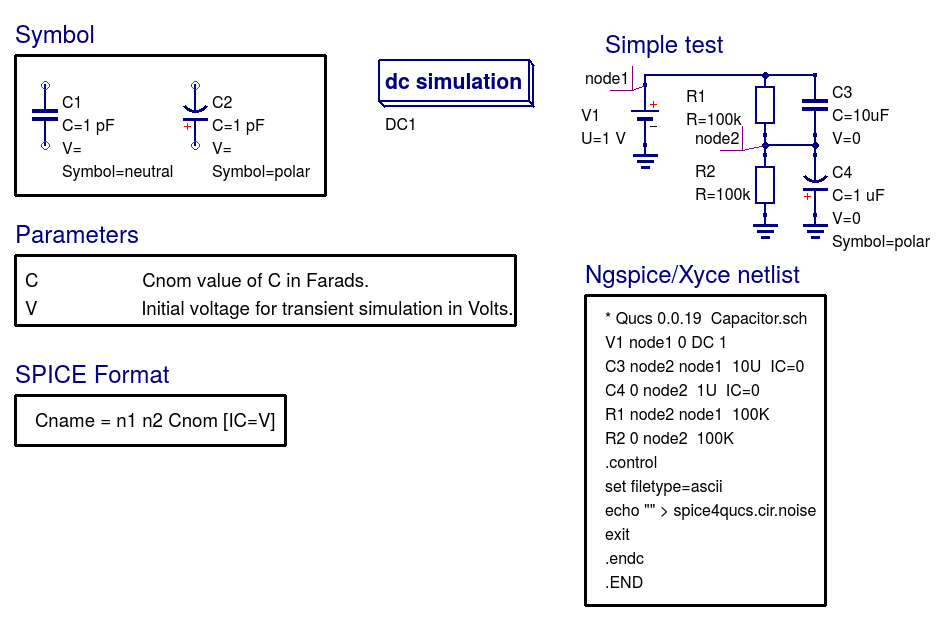

- Qucs circuit simulator switch how to#
- Qucs circuit simulator switch install#
- Qucs circuit simulator switch full#
- Qucs circuit simulator switch software#
- Qucs circuit simulator switch download#
So let's make 50 points per decade and apply okay? When using the NG spice as a simulation engine, we need to include the equations in this block over here, the nutmeg equation block. And we're going to be finishing at one gigahertz. This play that 50 points, a simulation and go ahead and do it.
Qucs circuit simulator switch full#
So the frequency it's one megahertz, we can use 10 microseconds so you can have 10 full cycles of the input signal. I will do a transient simulation and then AC simulation. Let's start with one megahertz okay to be there, we can come to simulations.

We have our district good and the variables are field, you can also change here and display in this schematic the frequency one gigahertz. Going to be using one kilo ohm, ad and CL going to be using one pico farad ad can delete this one and I'm going to call this variables. Double click and then you can go to properties and set the values of the variables rs. Now put here we can use this insert equation tool. And a lumped elements we going to need to grumps you can connect this with a wire we can name this word as input. Own sources I'm going to need here an AC voltage. In components we can start by choosing a resistor we're going to be building a low pass filter and a capacitor I'm going to name this resistor RS. I'm going to browse and choose desktop for myself, desktop, and select that folder, okay. Just come to file, application settings, locations, and here you can choose your coax home directory. The first thing you need to notice is that I have not defined yet where my projects are going to be saved.
Qucs circuit simulator switch how to#
Now let's see a little bit about how to do simulation over here we are uncooked SAS. In there you select NG Spice and you add path where it has saved NG Spice in this case is C Spice 64 being NG Spice as a executable. Once this is done you can start your books as simulator and go to simulation menu and select the full simulator.
Qucs circuit simulator switch software#
And place it is strictly on C spice location otherwise the software will not be recognized. The most important thing is once you have downloaded you can just unzip it.
Qucs circuit simulator switch download#
And once we click there, we will be forwarded to the MG spice website you can click download and download this file over here. You can find the MG spice simulation engine. And then later on you come back to the same website, a little bit below.
Qucs circuit simulator switch install#
So on Qucs-S website, you can just click on this link to download, and then you follow the usual installation wizard to install it. Ancient MG spice is also going to teach you how to install here. There will be some helping to tourism disorder link, and we're going to be using it for a simulation.

So this presentation will be available online, you can just come here and for Windows systems, you can just download the books as from this link. Qucs-S is a simulation tool that you're going to be using throughout this course. Today I'm going to present you how to install and use Qucs-S. The course contains theoretical video classes with examples, quizzes, and an entire set of simulation files, step-by-step procedures, recorded data of real-life circuits, and solution videos so that students can learn from and build even better circuits. But ultimately, this would allow students to design and build their own transceiver at home! The other 30% will require students to either get access to an electronics lab or to purchase a few off-the-shelf components. The design labs are completely optional for obtaining the certificate, but they are recommended because they allow students to put into practice all the acquired theoretical knowledge, and of course, implementing the circuits is where all the fun is! The students will be able to do 70% of the design labs using simulation tools, which already offers a great learning experience. It is divided into two parts: (1) theoretical lectures will cover the basis of RF and mmWave Circuit Design and (2) design labs will include simulation and implementation of these circuits. The course covers the topics on how to derive the RF wireless systems specifications, and how to design the main building blocks of a transceiver, i.e., low noise amplifier, power amplifier, RF mixers, oscillators, and PLL frequency synthesizers.

This unique Master-level course offered by the Center for Wireless Technology Eindhoven (CWT/e) of the Eindhoven University of Technology, The Netherlands, provides students with in-depth knowledge and hands-on experience on RF and mmWave circuit design.


 0 kommentar(er)
0 kommentar(er)
